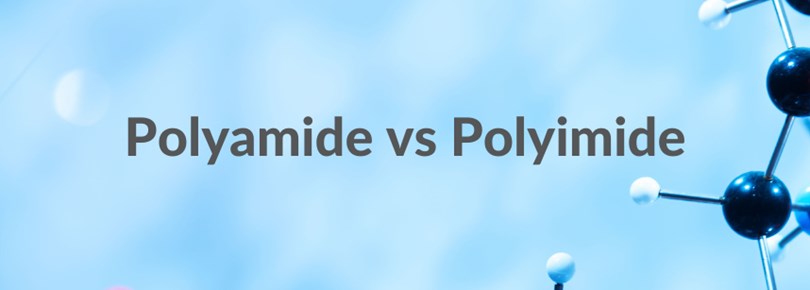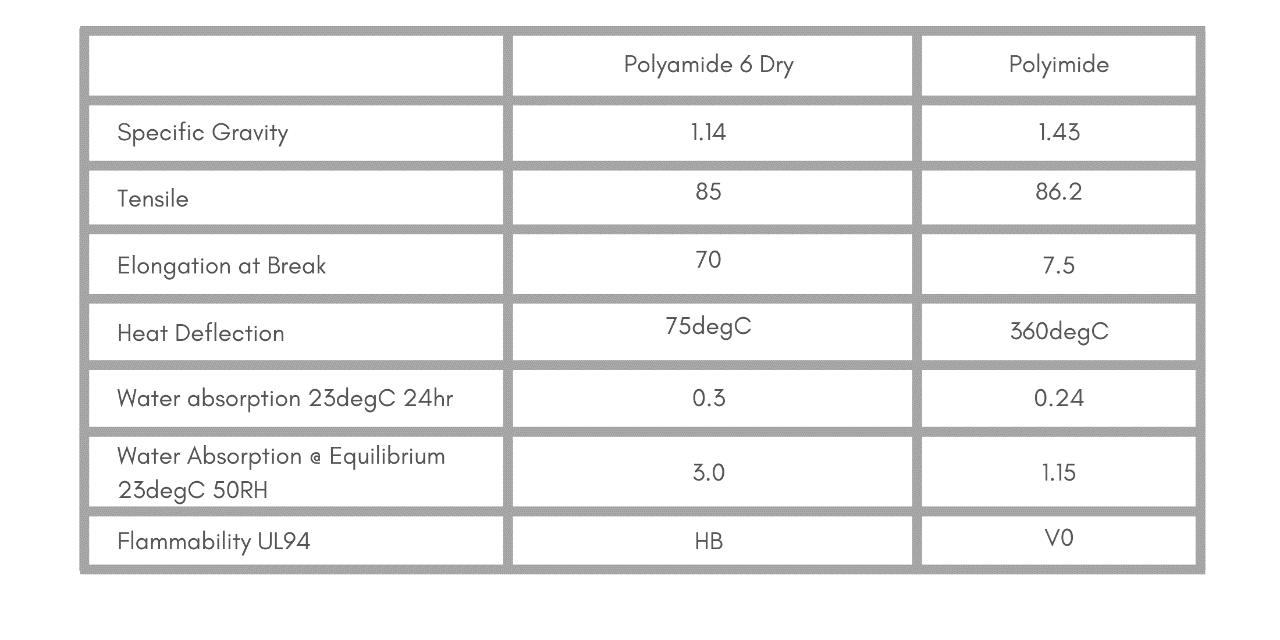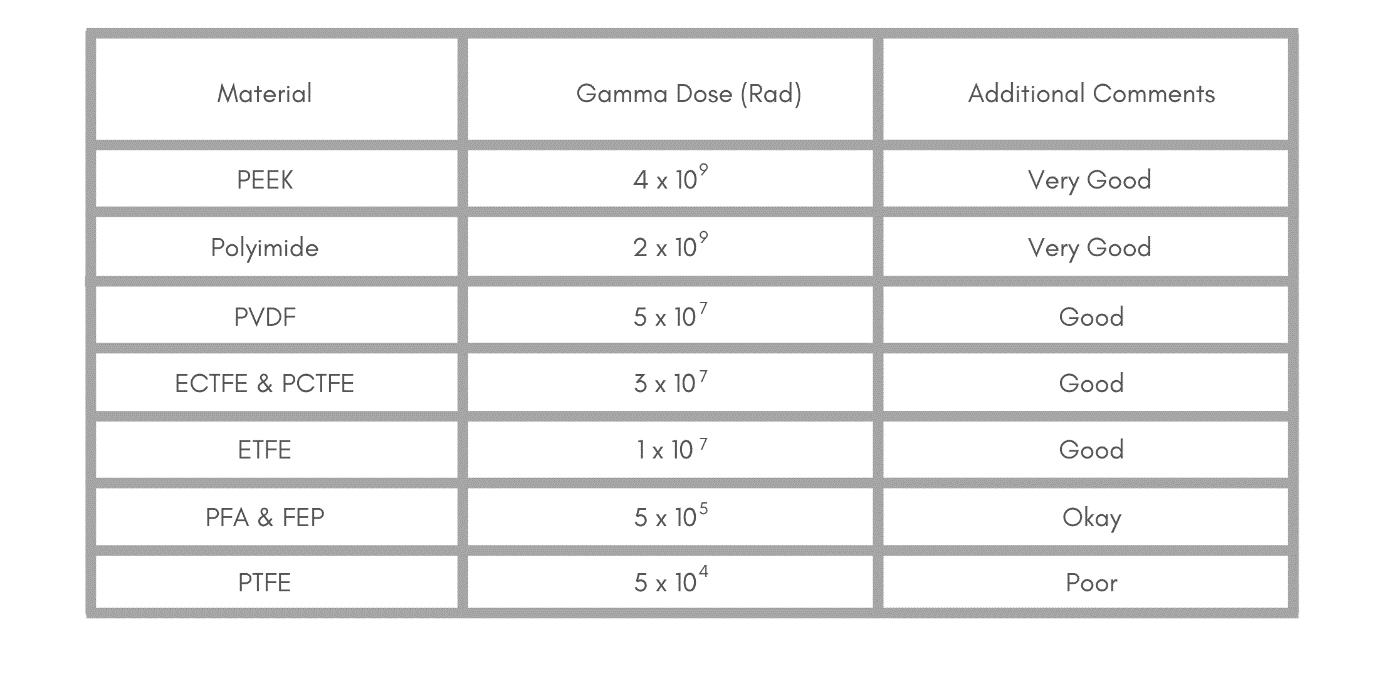Polyamide vs Polyimide
April 2021

Polyamide and Polyimide are both compounds made out of monomers but they have different mechanical properties based on their structures.

The most well-known Polyamide is Nylon, Nylons generally tend to be semi-crystalline and are very tough materials, available in different grades those most commonly supplied as engineering plastics would be Nylon 6, Nylon 66 and Nylon 6.12. they provide good resistance to most chemicals, however, they can be attacked by strong acids and do not work well at high temperatures. Nylons can be blended with fillers such as glass or oil to enhance certain aspects of their performance. The main applications of polyamides include switches, connectors, support and guidewheels, ignition components, sensors, cable sheeves, motor parts in auto electrical systems, throttle valves, and other moulded components.
Polyamides are made via the polymerisation of diamines and dicarboxylic acid monomers.
Polyimide is a polymer of imide monomers and is sometimes abbreviated as PI. It is regarded as a beneficial engineering plastic because of its unique physio-mechanical and chemical properties. These properties make it suitable for a diverse range of applications, from aerospace to the transportation industries such as engine covers and other heat-resistant components. Polyetherimide (PEI), and Polyamideimide (PAI) are also classified as Polyimides due to containing the imide group. PEI’s are a combination of polymers consisting of both the polyimide and polyether units in the backbone. Because PEI’s and PAI’s are produced from aromatic diamines and anhydrides, they are grouped under the aromatic class of polyimides.
Polyimides are formed from either the reaction between dianhydride and diamine or, the reaction between dianhydride and diisocyanate.
Polyimides display very good radiation resistance, second only to PEEK.

Among these polyimides, thermosetting polyimides have thermal stability, good chemical resistance, and mechanical properties. These polyimides have a characteristic yellow colour.
Polyamides and polyimides are two types of compounds that often get confused due to their similar names. However, they are very different from each other in chemical properties as well as mechanical properties.
To find out how we can help your latest project please contact info@fluorocarbon.co.uk.










